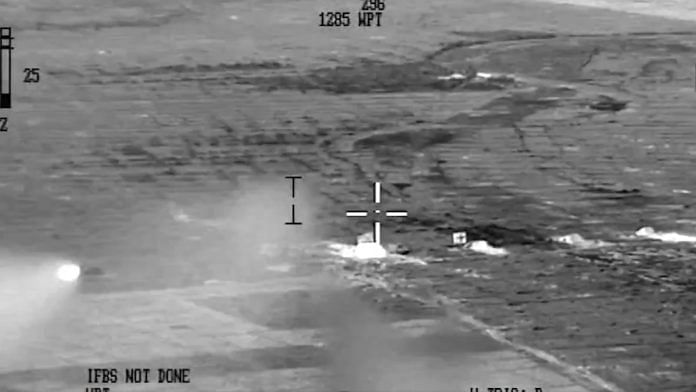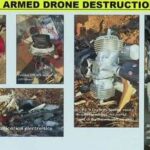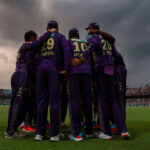ThePrint has also reliably learnt that the Pakistan Air Force (PAF) lost at least a couple of aircraft between 8 and 10 May.
Director General of Air Operations Air Marshal A.K. Bharti had publicly said that Pakistani aircraft were hit and technical analysis is being done, following which the armed forces would share more details.
Asked if the Indian Air Force (IAF) shot down Pakistani aircraft, he had said “Their planes were prevented from entering inside our border…definitely, we have downed a few planes…definitely, there are losses on their side which we have inflicted.”
He added that the exact numbers are with the IAF, but it is still and will come out with a report soon.
The IAF has also said that details of its own losses will be made public in due course. However, all pilots have been accounted for
ThePrint is withholding information garnered so far of the onslaught by India and the damage caused to Pakistan since the operation is still ongoing and will wait for IAF to release the details formally.
However, even as the IAF finalises its report based on technical and visual evidence, ThePrint has learnt that the strikes were much deeper and wider than what has been claimed by both sides officially.
Sources said that India does not want Ops Sindoor to be about claims and counter claims and hence is very careful about the information it is putting out in public.
This is directly opposite to the tactics of the Pakistan military which claimed a lot without any evidence. Pakistan even showcased forged satellite images to show damage on the Indian side but got by international experts.
The IAF, it is learnt, does not wish to state anything which might be questioned due to lack of immediate tangible proof like what happened in the aftermath of the Balakot strikes when doubts were raised on the extent of damage inflicted.
For instance, even during the strike on terror camps in Pakistan and PoK on 7 May, India used missiles like the Crystal Maze which relays back video till the second it strikes, as was visible in one of the videos released by the Indian defence ministry.
Almost all strikes of 7 May were covered by high-resolution reconnaissance unmanned aerial vehicles and post damage satellite pictures.
For all strikes post 7 May, India has claimed only those videos of which were shot by the public and shared on social media, or for which clear satellite pictures are available. There are some more strikes that Pakistan has obviously not claimed and neither has India.
Talking about the operations, sources also said that the much talked-about Chinese air-to-air missile PL-15, could not score a single hit.
The IAF, on the other hand, used a host of aircraft and air defence systems since 7 May with major setbacks inflicted to PAF from 8 May onwards.
The initial part of Operation Sindoor focussed on nine terror camps which were taken out by the IAF and the Army in pinpointed strikes with major casualties inflicted on the terror infrastructure.
From 8 May onwards, the strikes focussed on showing real raw power of the IAF to the Pakistani defence establishment, sources said.
A plethora of missiles, loitering munitions were used by the IAF to strike back at the Pakistani military.
It is learnt that several Chinese-supplied HQ-9B long-range air defence systems and HQ-16 medium-range air defence systems were taken out by Harpy and Harop loitering munitions—in use with the IAF for years even before the word “drones” caught the fancy of the world in the wake of the conflict between Azerbaijan and Armenia over Nagorno-Karabakh.
The Government of India had that the Indian military “bypassed and jammed Pakistan’s China-supplied air defence systems”, borne by the fact that loitering munitions travelled deep inside Pakistan to strike at places close to what Pakistan Army considers as its fiefdom.
Missiles fired by the IAF include the BrahMos supersonic cruise missiles, which Pakistan claims were fired from air (IAF has both air and ground versions), SCALP long-range air-to-ground missiles, Hammer air-to-ground missiles, Rampage air-to-ground missiles and Spice 2000 among others.
The Indian medium-range surface-to-air missile system (MRSAM also known as Barak 8) and the indigenous Akash too saw action, and so did the S-400.
“It was a combined shock and awe operation using long-range missiles, air defence missiles, loitering munitions and strikes at specific sites that caused wide range damage to Pakistani military forces that forced them to seek ceasefire on the fourth day itself,” said one source.
Maximum damage caused to Pakistan Air Force assets on the ground was by way of missile strikes on its primary logistics hub, the Nur Khan base in Rawalpindi, and the Bholari air base. PAF Air Marshal Masood Akhtar (Retd) on a Pakistani news channel said he had information that a Saab Erieye, an Airborne Early Warning and Control System (AEW&C), was destroyed when India struck the hangar at Bholari.
It is reliably learnt that the actual loss may be higher than what Pakistan is showcasing, both officially and unofficially.
Pakistan operates 9 Saab Erieye and two IL 78 mid-air refuellers.
Incidentally, Pakistan has also put out names of five PAF personnel it said were killed in the strike on Bholari air base.
Sources said it was on the morning of 10 May, after India carried out hits on PAF bases in Chaklala, Rafiqui, Rahim Yar Khan, Sargodha, Bhulari, and Jacobabad, that Pakistan’s DGMO made frantic calls to his Indian counterpart, wanting a ceasefire.
“On 7 May when our DGMO wanted to talk, they shrugged it off vowing retaliation. On 10 May, they reached out desperately. Clearly shows that the message was overwhelmingly delivered to Pakistan,” a source said.
Pakistan PM Shahbaz Sharif, addressing an event Friday, said that “At around 2.30 am on 10 May, General Syed Asim Munir called me on a secure line and informed me that India’s ballistic missiles have hit Nur Khan Airbase and other areas”.
Incidentally, it was after that Pakistan was desperately seeking a ceasefire.
As Air Marshal Bharti said earlier, “Did we achieve our military objective? ‘A thumping yes.”
(Edited by Amrtansh Arora)








